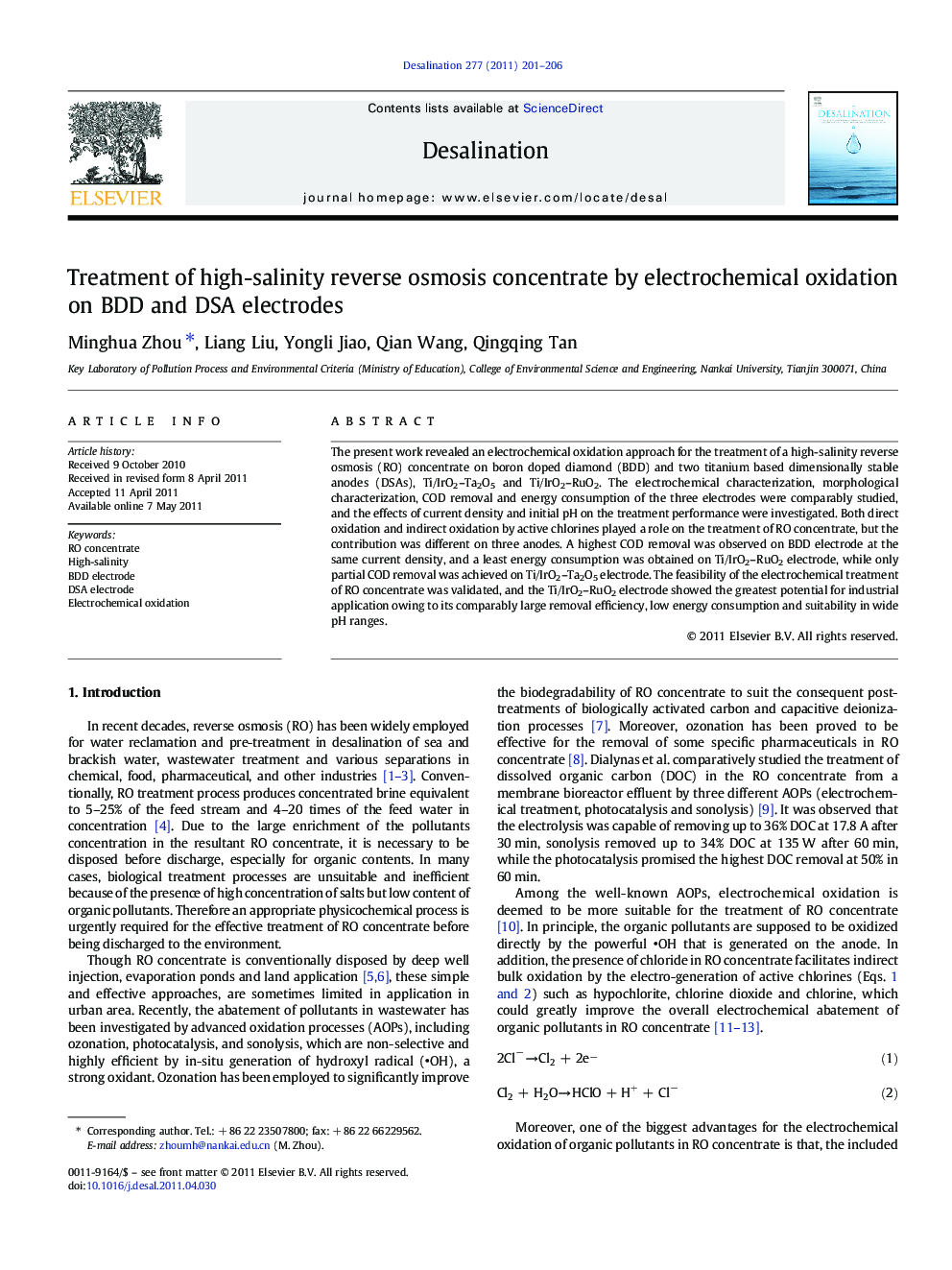| Article ID | Journal | Published Year | Pages | File Type |
|---|---|---|---|---|
| 625025 | Desalination | 2011 | 6 Pages |
The present work revealed an electrochemical oxidation approach for the treatment of a high-salinity reverse osmosis (RO) concentrate on boron doped diamond (BDD) and two titanium based dimensionally stable anodes (DSAs), Ti/IrO2–Ta2O5 and Ti/IrO2–RuO2. The electrochemical characterization, morphological characterization, COD removal and energy consumption of the three electrodes were comparably studied, and the effects of current density and initial pH on the treatment performance were investigated. Both direct oxidation and indirect oxidation by active chlorines played a role on the treatment of RO concentrate, but the contribution was different on three anodes. A highest COD removal was observed on BDD electrode at the same current density, and a least energy consumption was obtained on Ti/IrO2–RuO2 electrode, while only partial COD removal was achieved on Ti/IrO2–Ta2O5 electrode. The feasibility of the electrochemical treatment of RO concentrate was validated, and the Ti/IrO2–RuO2 electrode showed the greatest potential for industrial application owing to its comparably large removal efficiency, low energy consumption and suitability in wide pH ranges.
Research Highlights► Remove organic pollutants from RO concentrate by electrochemical oxidation on BDD and two DSAs. ► Comparably studied the three electrodes characteristics, COD removal and energy consumption. ► Both direct and indirect oxidation played a role on treatment, but the contribution was different. ► Ti/IrO2-RuO2 electrode showed the best potential for application account for efficiency and cost.
